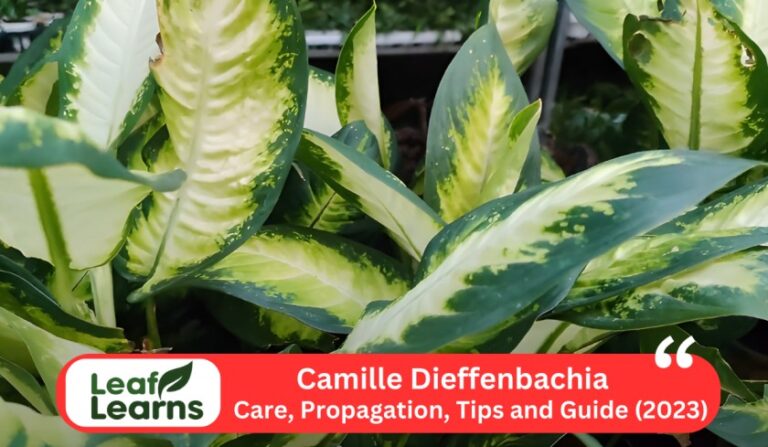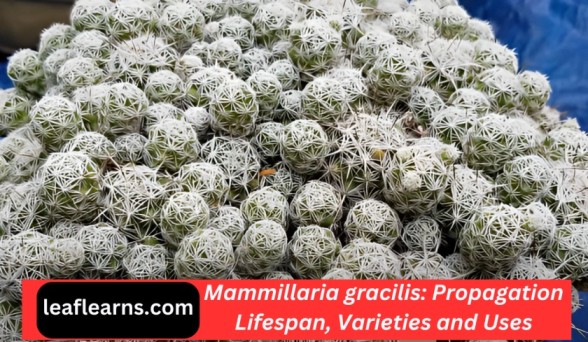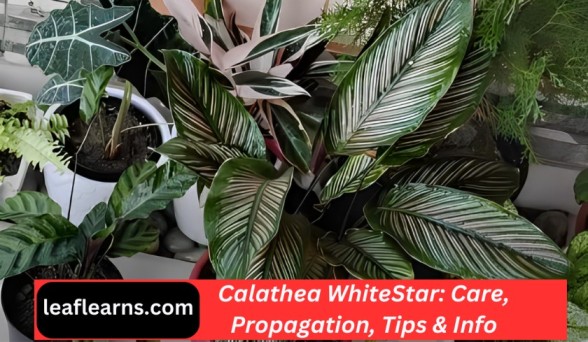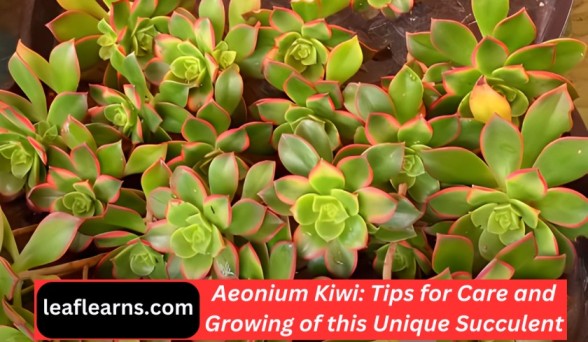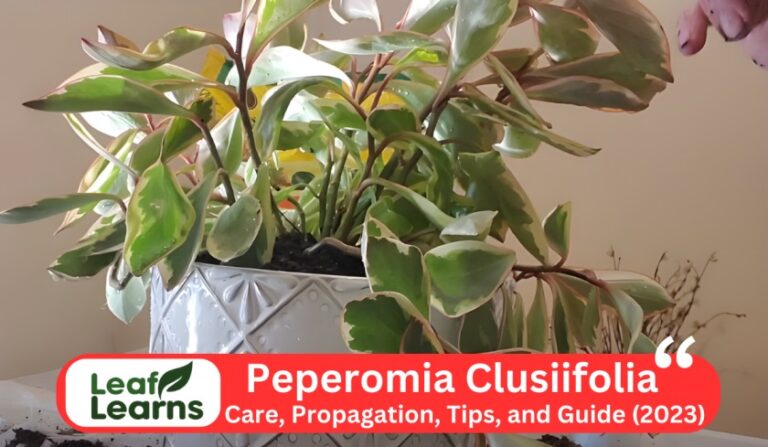Philodendron Lupinum Care, Propagation and Tips Guide (2023)
The Lupinum Plant scientifically called Philodendron lupinum and this plant is belonging to the Araceae family. It is primarily found in the Caribbean, Colombia, and Venezuela. This is the type of climbing hemiepiphyte plant and also this plant can grow quite large and reaching the height of 10 to 20 feet.
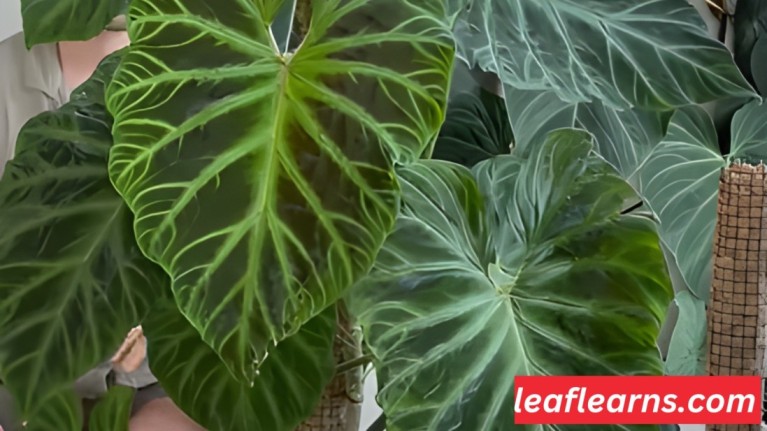
All over the world it is cultivated as houseplant. Its striking leaves makes the colour shades of green and bronze, measuring up to 20 inches in length. This plant can can grow in the temperatures between 63 to 80ºF (17 to 27ºC) and happy to grow in high humidity levels like above 60%.
Pruning can do it in late spring to make the plant beautiful, and it requires medium to bright indirect sunlight But not too much light because it hazard to the plant. The Philodendron Lupinum Plant can grow best in quick-draining, loamy soil having the pH level between 6.5 to 7.
This plant take more watering, it should be watered when the top inch of soil is dry and water become less in the soil.
When the deep red flowers can grow and open , it can make a sunshine and make the plant much beautiful but this type of plant can face pests like spider mites, mealybugs, and aphids and if we cannot make any precautions then it will destroy.
| Common name | Lupinum Plant |
| Scientific Name | Philodendron lupinum |
| Family | Araceae |
| Distribution | Caribbean, Colombia and Venezuela |
| Plant type | Climbing hemiepiphyte |
| Size | 10 to 20 feet as a houseplant |
| Leaf Colour | green and bronze |
| Leaf size | up to 20 inches in length |
| Temperature | 63 to 80ºF (17 to 27ºC) |
| Humidity | High humidity preferred (above 60%) |
| Pruning | Late spring |
| Light requirement | Medium to bright indirect sunlight |
| Soil requirement | Quick-draining, loamy |
| Watering Need | Water if the top inch of soil is dry |
| Soil pH | 6.5 to 7 |
| Flower colour | Deep red |
| Pests | spider mites, mealybugs, and aphids. |

Contents
- 1 Top Care Tips
- 2 Care for Philodendron Lupinum
- 3 Pruning
- 4 Growth Rate and Size
- 5 Propagating Philodendron Lupinum
- 6 How to Grow Philodendron Lupinum From Seed
- 7 Repotting
- 8 Flowering and Foliage
- 9 Overwintering
- 10 Common Pests
- 11 Plant Diseases
- 12 How to Get this Plant to Bloom
- 13 Problems and Solutions
- 14 Toxicity of Philodendron Lupinum
- 15 Philodendron Lupinum Appearance
- 16 Suggested Uses
- 17 Exploring the Diversity of Philodendron-Lupinum Variations
- 18 Unlocking the Beauty and Care of Mature Philodendron Lupinum Specimens
- 19 Conclusion
- 20 FAQs
Top Care Tips
Moderate Lighting
- Put your Plant in a spot with strong, filtered light.
- Avoid the sun’s direct rays since they might burn its delicate leaves.
- Proper Watering
- Always keep the soil wet, but not waterlogged.
- When the soil seems dry in the top inch (2.5 cm), water it.
- To avoid causing leaf damage, use non-chlorinated, room-temperature water.
- Maintain Humidity
- Calatheas do well in settings with a lot of dampness.
- To add more moisture, mist the plant often or use a humidity tray.
- Plants can benefit from increased humidity by being grouped together.
- Temperature and Environment
- Keep the temperature in the 65–80°F (18–27°C) range.
- Avoid rapid temperature changes and chilly draughts.
- Philodendron-Lupinum like a calm, somewhat warm habitat.
- Regular Pruning and Cleaning
- With clean scissors or pruning shears, trim any browning or yellowing leaves.
- To keep the leaves clean, lightly dust them with a moist cloth or sponge.
- By doing this, the plant looks nicer and can breathe more easily.
Care for Philodendron Lupinum

Light Requirement
When it comes to light needs, this plant maintenance is easy. This plant enjoys bright, diffused light, therefore it should be planted where it gets filtered sunlight or away from full sun exposure.
Avoid placing it directly in the sun since this might cause leaf burns. Insufficient lighting, on the other hand, might impede its development and dull its brilliant look.
Water Requirements
When it comes to water Philodendron-Lupinum prefers a “moderate and steady” approach. Make sure the soil is evenly wet but not waterlogged to keep this plant happy.
To avoid root rot, let the top inch or two of soil dry out between waterings. It’s similar to giving a thirsty plant a drink but avoiding drowning it.
Pay attention to the soil’s moisture content and modify your watering schedule as necessary, especially during the growth season.
Soil Requirement
It’s crucial to concentrate on the soil needs of Philodendron-lupinum when caring for it. This plant prefers a wet, well-draining soil that doesn’t become soggy.
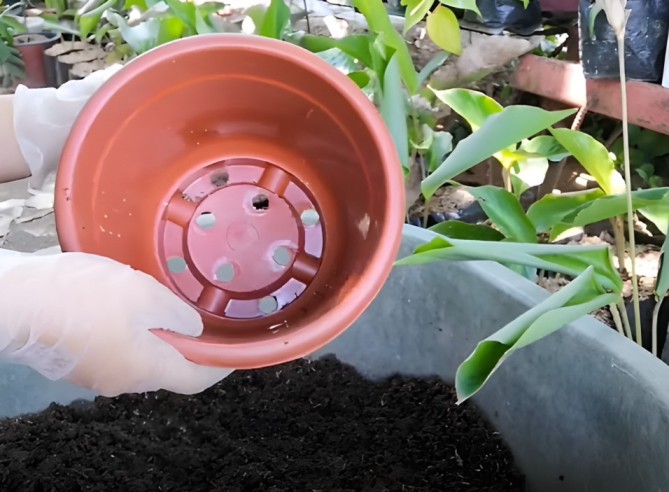
For improved drainage, potting soil with perlite or orchid bark additions is an ideal combination. Root rot, a problem that frequently affects this plant, is prevented by the soil choice. When the top inch of soil feels dry to the touch, water the plant.
Make sure the pot you purchase has drainage holes to let excess water escape. You may encourage your Philodendron-Lupinum to survive and develop strongly by providing the ideal soil conditions.
Temperature Requirement
It’s crucial to observe this plant’s temperature needs if you want to take good care of it. The ideal setting for this tropical plant is one that is stable and cosy.
Keep your Philodendron plant in a space that is kept at a temperature of between 18 and 27 degrees Celsius (65 to 80 degrees Fahrenheit). Keep it away from chilly draughts and abrupt temperature fluctuations because these might stress the plant.
Your plant will flourish and exhibit its vivid green leaves if the proper temperature conditions are provided, giving it a stunning addition to your interior environment.
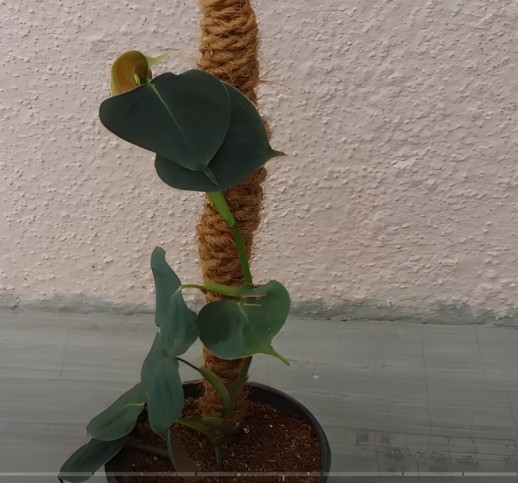
Humidity requirement
When it comes to humidity this Philodendron plant is a somewhat tolerant houseplant. It doesn’t require much, although it does like a little moisture in the air. Aim to keep your home’s humidity level at a moderate level to ensure its success.
This may be accomplished by giving the plant sporadic mistings or by placing a small tray of water and stones nearby to increase the humidity in the area.
Fertilization Requirement
These attractive plants don’t require any upkeep. During the growing season, which is normally spring and summer, just give them a balanced liquid fertilizer diluted to half strength to keep them healthy and content.
To ensure that your Philodendron-Lupinum has the nutrients it needs to flourish, feed it once every four to six weeks.
Since the plant’s development naturally slows down in the autumn and winter, you may reduce or even completely forgo the fertilizer for the remainder of the year.

Potting Requirement
The potting needs for Philodendron-Lupinum are easy to meet, and so are the care requirements.
This plant can adapt well and doesn’t need to be potted up often. Start by selecting a pot that is just a little bit bigger than the one it is currently in, leaving enough area for development without taking up too much additional space.
Use well-draining potting soil while repotting to maintain healthy roots. Check for drainage holes in the pot to avoid overwatering.
Pruning
It’s easy and good to prune your plant. Regular trimming promotes bushier growth, removes dead or yellowing leaves, and keeps the plant’s form.
To remove any extra or ugly stems or leaves, just use clean scissors or pruning shears. Just above a leaf node is a good place to focus when pruning to encourage new growth.
Additionally, to promote a more compact and luscious appearance, you can cut leggy or excessively long stems.
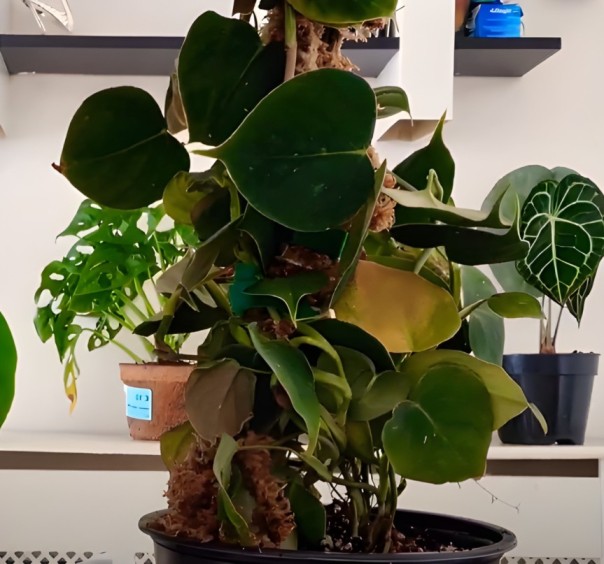
Growth Rate and Size
The Philodendron-Lupinum is a popular choice for both novice and seasoned plant enthusiasts because to its moderate growth rate and manageable size. Usually, it begins as a little, compact plant with small leaves, but with time, it expands to become a bigger plant.
In ideal circumstances, you may anticipate it to grow to a height of around 12 to 24 inches (30 to 60 centimetres) in its first year and may continue to develop at a similar rate in succeeding years.
Although it is smaller than some other Philodendron kinds, it won’t take over your area, making it simple to incorporate into your indoor plant collection without crowding it.
Propagating Philodendron Lupinum
Stem Cuttings
- Select a stem that is healthy and has at least one or two nodes, which are little bumps where roots and leaves sprout.
- Cut the stem with clean, precise scissors or pruning shears right below a node.
- Put the cutting in a water-filled jar or vase, making sure the node is immersed.
- To keep the water clean and maintain water levels, change the water frequently.
- After a few weeks, roots will start to appear. Transplant the cutting into a container with well-draining soil once the roots have grown to a few inches in length.
Air Layering
- Choose a mature stem from which you wish to grow a segment.
- Make a little cut or take a piece of bark off the stem that is approximately one inch long.
- Dusting rooting hormone over the exposed area is optional but might hasten the process.
- Sphagnum moss should be wrapped around the wound and sealed with plastic wrap or a plastic bag.
- Within a few months, roots should start to emerge if you keep the moss wet.
- Once you see enough roots, carefully cut below the region where the roots are and place the plant in a container.
Offsets or Pups
- Offsets or “pups” from Philodendron lupinum can frequently be detached and planted elsewhere.
- Wait until the offset establishes its own root system, several leaves, and many leaves.
- Cut or pluck the pup away from the parent plant, taking care to do so gently.
- In a different container with appropriate potting soil, plant the puppy.
Division
- Division is an excellent way to spread Philodendron lupinum, which is a bigger, more mature plant.
- Remove the plant from its pot with care, shaking off extra soil.
- Divide the plant into portions with a clean, sharp instrument, making sure that each section includes both roots and leaves.
- Repot each segmented area into a separate container with new potting soil.
How to Grow Philodendron Lupinum From Seed
The journey of growing this plant from seed is thrilling. Fill a small container halfway full of well-draining potting mix before gently pressing the seeds into the soil, being careful not to bury them too deeply.
To construct a miniature greenhouse and maintain high humidity, cover the pot with plastic wrap or a plastic lid.
Place it away from direct sunlight in a warm, bright area. By spraying the soil or using a spray bottle, you may keep it regularly wet but not waterlogged. Remove the plastic cover and gradually expose the sprouting seedlings to indirect light as you start to notice the tiniest sprouts.
As they develop, repot them into bigger containers, and before long you’ll have a flourishing Philodendron-Lupinum of your own to enjoy!
Repotting
Moving your plant to a new, somewhat larger pot is known as “repotting.” the short version When your plant outgrows its current place or the soil deteriorates, it’s time.
With care, take off the old soil from the plant and replace it with fresh potting soil. Verify the drainage system of the new pot. This promotes the healthy growth of your philodendron and provides more space for its roots to extend out and explore.
Flowering and Foliage
A mesmerising plant called Philodendron-Lupinum is renowned for its breathtaking fusion of both blooming and leaf attractiveness.
It adds beauty to any area because to its thick, glossy leaves in a range of colours of green. It doesn’t bloom frequently, but when it does, the blossoms are small and endearing.
This plant is favoured by plant enthusiasts because of its stunning leaves rather than its blooms.
Overwintering
This plant has to be shielded from the cold throughout the winter. To help it live until spring when it can go back outside, bring it inside before winter, keep it in a warm area with indirect sunshine, decrease watering, and prevent draughts.
Common Pests
Your Philodendron-Lupinum may attract pests. Aphids, mealybugs, and spider mites are typical offenders.
By draining the sap from your plant or encasing it in webs, these tiny intruders can destroy it. Regular inspection and timely treatment of any pests with mild soap and water or neem oil can help to safeguard your Philodendron.
Plant Diseases
This type plants leaves may get yellow, have brown blotches, or droop as a result of excessive watering, underwatering, or inadequate lighting.
Provide bright, indirect light and steer clear of direct sunlight while keeping the soil equally wet but not soggy. Maintain your plant’s health and vitality by regularly checking and adjusting care.
How to Get this Plant to Bloom
Make a cosy setting for your Philodendron-Lupinum to flourish. Provide direct, strong sunshine and keep the temperature between 65 and 75 degrees Fahrenheit (18 and 24 degrees Celsius).
Keep the soil barely damp but not drenched. Every four to six weeks during the growing season (spring and summer), apply a balanced liquid fertiliser.
Finally, be patient since it could take a while for these plants to reach maturity before they start to blossom.
Problems and Solutions
Problem: Yellowing leaves
Solution: Adjust watering to keep soil consistently moist, but not soggy, and avoid overwatering.
Problem: Browning leaf tips
Solution: Trim the brown tips, then use a humidity tray or mist to maintain the ideal humidity levels.
Problem: Slow growth
Solution: Make sure your plants receive enough indirect sunlight and feed them during the growing season (spring and summer) using a balanced liquid fertiliser.
Problem: Pests (e.g., mealybugs or spider mites)
Solution: Regularly check and treat the afflicted areas with a mild insecticidal soap or neem oil.
Problem: Leggy or stretching growth –
Solution: To promote uniform development, place the plant in brighter, indirect light and rotate it occasionally.
Toxicity of Philodendron Lupinum
Like many other Philodendron species, Philodendron-Lupinum has poisonous elements. Oxalate crystals found in the plant’s leaves and stems may irritate the skin or eyes if consumed or if the sap is in contact with them.
To prevent accidental consumption or skin irritation, keep this plant away from children and dogs. To be safe, it’s recommended to handle it gently and wash your hands right away after handling it.
Philodendron Lupinum Appearance
This plant has eye-catching, heart-shaped leaves. The undersides of its leaves, which are generally glossy and dark green, are brightly scarlet or maroon.
This produces an intriguing contrast. Because of its upright and compact growth pattern, the plant may be grown both indoors and outdoors. Any room is given a touch of elegance by its rich look.
Suggested Uses
The adaptable plant Philodendron-Lupinum works well in a variety of environments.
It offers a touch of tropical elegance and is great for interior design.
It is ideal for homes or businesses since it thrives in low to medium light.
can be used as a trailing vine or presented in hanging baskets.
Excellent air purifier that enhances indoor air quality.
Low-maintenance, only needing occasional watering and soil with good drainage.
complements classic or modern aesthetics.
gives any area a vivid green accent.
Suitable for all levels of plant enthusiasts.
the most beautiful addition to botanical collections.
Exploring the Diversity of Philodendron-Lupinum Variations
It is a captivating plant known for its stunning foliage, comes in various enticing variations that cater to the preferences of plant enthusiasts.
Whether you’re drawn to the vibrant philodendron-lupinum bleu or the elegant philodendron-lupinum jaune, these variations offer a diverse array of colors and patterns to suit your garden or indoor space. Their care and maintenance, marked by the need for proper entretien, ensure their growth and maturity, making them prized possessions among collectors.
While some may seek the rare philodendron queen for their collection, others may prefer the king variety for its regal presence. The versatility of lupinum also extends to its size, from smaller 1m and 2m specimens to towering 9ch giants, accommodating spaces of all dimensions.
Unlocking the Beauty and Care of Mature Philodendron Lupinum Specimens
This type plant achat and philodendron-lupinum for sale open doors for plant enthusiasts to acquire these botanical wonders, although their prices can vary depending on rarity and maturity.
Whether you’re a novice gardener or an experienced collector, consulting resources like philodendron-lupinum wikipedia or watching philodendron youtube videos can provide valuable insights into their specific needs and care requirements.
The lupinum liquidum and mature philodendron-lupinum specimens, in particular, are sought after for their lush, glossy leaves and impressive growth rates.
As you delve into the world of philodendron-lupinum, you’ll discover a range of captivating variations and a vibrant community of plant enthusiasts eager to share their knowledge and passion for these unique botanical treasures.
Conclusion
In conclusion, caring for Philodendron-Lupinum plants may be enjoyable and satisfying. Remember to provide them with the proper quantity of light, water, and humidity to keep them healthy.
Maintain a comfortable temperature range for them and keep an eye out for typical problems like yellowing leaves. In particular, Philodendron-Lupinum is renowned for its lovely leaves and sporadic blooms.
You may select the Philodendron kind that best suits your tastes from a wide range of colours and sizes. These plants may make wonderful additions to your collection whether you’re a novice gardener or a seasoned one.
FAQs
What kind of light does Philodendron Lupinum prefer?
Avoid placing of this plant in direct sunlight; this plant loves soft, indirect light.
How should you water Philodendron Lupinum?
To avoid root issues, keep the soil equally wet and let the top inch of soil dry in between waterings.
How can you make Philodendron Lupinum bloom?
Provide indirect sunshine, maintain a steady temperature of between 65 and 75 degrees Fahrenheit (18 and 24 degrees Celsius), keep the soil just damp, and fertilise with balanced liquid fertiliser throughout the growth season to promote flowering.


